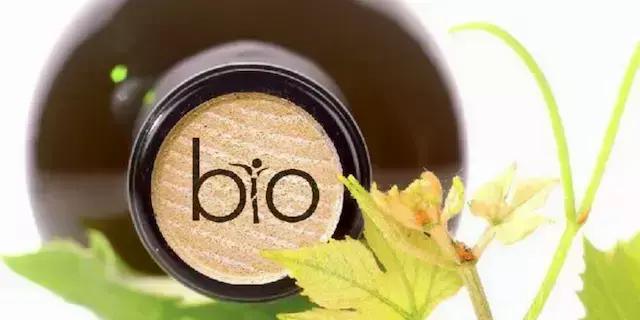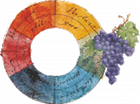Felice Cappa
author and director, editor-in-chief of Viticolturabiodinamica.it
Intervention at the 6th Conference on Modern Biodynamic Viticulture:
“Scientific Paradigms in Comparison”
Villa medicea di Cerreto Guidi
When thinking of Johann Wolfgang Goethe and wine, two aphorisms come to mind, one so well-known that it is printed not only on labels but also on merchandise and postcards:
Life is too short to drink mediocre wines
An ambiguous aphorism, it sounds like an ode to pleasure written by a copywriter, but it hides the tragedy of his only son, August, who died at just 41 of liver cirrhosis. The other Goethe aphorism about wine is less known but equally evocative:
A woman and a glass of wine satisfy every need; he who neither drinks nor kisses is worse than dead.
Naturally, one can substitute “woman” with “man,” but one cannot replace the glass of wine that inspired and nourished the body and soul of one of the greatest men of culture of all time.
George Eliot said of him that he was the last universal man. As the title of this reflection, I did not choose one of the aphorisms but the first lines of a poem, which in its entirety reads:
Grow greener and fatter,
vine leaves, in the pergola here
towards my window!
Bloom more densely, twin berries,
and ripen faster and shine fuller!
The maternal gaze of the last sun broods over you,
the fruitful glory of the friendly sky breathes lightly around you;
the serene magical lunar breeze refreshes you,
and you are bathed, alas!,
by these eyes
with full, turgid tears
of the love that endlessly enlivens.
(Goethe, Autumn 1775)
I will not attempt an exegesis of the text, leaving everyone the pleasure of finding references to the core themes of biodynamics.
Why did I choose a poem?
Because Goethe teaches that what surrounds us – and we ourselves, perceiving and living it – can be represented in many forms, through numbers and the descriptions of reason and intellect, but also through the song of words. Science is no exception.
The conference title Scientific Paradigms in Comparison is drawn from Kuhn’s epistemological theory. In brief, the American philosopher maintains that scientific research progresses in leaps. The laws interpreting reality are all coherent within a given system, but this does not mean it is the only one. During the era in which a paradigm prevails, scientists operating within its bounds carefully avoid questioning the foundations of their practice and the context supporting it.
In his work The Structure of Scientific Revolutions, Kuhn explains how one moves from one system to another through fractures, resulting in paradigm shifts. When a phenomenon cannot be explained, a radical change in the horizon in which it is placed is indispensable: for knowledge to progress, it is essential to shift to a new paradigm.
For Goethe:
Hypotheses are scaffolds erected before the building, removed when the building is complete. They are indispensable to the mason, only he must not mistake the scaffolding for the building.
(Goethe, Maxims and Reflections)
What is Goethe’s paradigm?
It is important to answer this because, as we know, Steiner starts from Goethe, studying his scientific, philosophical, and literary works.
We can say, simply, that if Steiner is the father of biodynamics, Goethe is its grandfather.
The paradigm within which Rudolf Steiner is situated is the one designed by Goethe.
Recall that in 1882, at the suggestion of Karl Julius Schröer, his professor, and Joseph Kürschner, editor of a new edition of Goethe’s works, Steiner was tasked with handling Goethe’s scientific writings. In 1886, he published a first book on Goethe’s philosophy: Fundamental Lines of a Theory of Knowledge of Goethe’s World Conception.
In 1888, Steiner was invited to work as a curator in the Goethe archives in Weimar, where he remained until 1896, writing introductions and commentaries for four volumes of Goethe’s scientific writings and publishing, in 1897, a second book on Goethe’s philosophy: Goethe’s World Conception.
In 1899, Steiner’s life began to change, as he recounts in his autobiography, thanks to the publication in Magazin of the article Goethe’s Secret Revelation, which addressed the esoteric nature of a Goethe fable, The Green Serpent and the Splendid Water Lily. Thanks to this article, Steiner was invited to speak at a Theosophical conference and for the first time publicly discussed his spiritual perception.
In the fairy-tale images of this story, Goethe’s spiritual gaze presents the evolution of the soul from a condition still feeling alien to the supersensible, to the level of consciousness in which life experienced in the sensible world interpenetrates the spiritual supersensible world, so that the two become one.
(Steiner, Goethe’s Secret Revelation)
Let us then try to sketch the contours of Goethe’s paradigm.
Goethe, in his worldview, besides having Spinoza as a reference, was strongly influenced in his studies of Nature by exchanges with the theologian Herder, who stated:
From stone to crystal, from crystal to metals, from these to plants, from plants to animals, from these to man, we saw the rise of the form of organization and with it the forces and impulses of nature become increasingly manifold, to finally reunite in the figure of man, as far as he could comprehend them.
(Herder, Ideas on a Philosophy of the History of Humanity)
The human being gathers in himself all the formative principles that other organisms (so-called “lower organisms') have developed unilaterally; Nature condenses in a single being what it has spread across many classes and orders. Each part of the “lower organisms,” for example of animals, must be found in man, albeit reduced or as ancestral residue. Nature cannot have gaps in the coherent formation of a type.
Goethe made an important scientific contribution by discovering the intermaxillary bone in humans, solving (in 1784, simultaneously with a French doctor, Vicq d’Azir) a problem debated since Aristotle, later taken up by Galen (both supportive), but contradicted for centuries by those like Vesalius, who claimed that man was an exceptional creature, isolated in Nature, and not the final degree in the continuum of animal forms.
Like the Scholastics and Linnaeus, Goethe applied a morphological approach to natural sciences, believing that Nature makes no leaps.
The focus of scientific inquiry becomes: what is the source of vitality and transformative capacity in Nature?
Nature! We are surrounded and entwined by it: powerless to escape, powerless to penetrate it more deeply. Unasked and without warning, it teases us in its dance, and dashes away with us, until we are tired and fall from its arms. It always creates new forms; what is, never was; what was, will not return; all is new and yet always old.
(Goethe, Nature)
Goethe can be considered a precursor to Darwinism, having conceived the organic governed by the same laws as inorganic nature. Living forms, according to Goethe, are the result of the metamorphosis of an archetype. Compared to Darwin, Goethe did not formulate the decisive concept of selection, upon which Darwin would base the theory of evolution.
Another insight is that many skull bones are transformed vertebrae, confirming for Goethe that Nature shapes organic forms according to a unified law (observations came from the skull of a ram found on the beach of Lido di Venezia). This led to the concept of an original animal type.
This morphological approach, especially thanks to travel in Italy, led him to study plants and their development. Goethe concluded that plant forms are not fixed to an original model, but possess remarkable variability, allowing adaptation and transformation. All parts of plants are variations of leaves, across all species, recognizing a single primitive type, just as in animals.
Thus, Nature’s processes have a single common denominator and guiding principle. For plant life, this corresponds to a model, an ideal species, the essential form of all manifestations. Observationally, one can only note the realization of the “original plant” in plants found in nature (according to Goethe, among Mediterranean species).
Each plant, therefore, should be considered as a stage in the metamorphosis of the essential form imposed by Nature, which cannot be rigidly schematized into genera and species.
What has form is immediately re-transformed; to perceive Nature vividly, we must remain mobile and plastic, following its example. Every living being is not an individual, but a plurality; even as an individual, it remains a collection of autonomous beings, equal in idea and nature, empirically identical or similar, different or dissimilar.
(Goethe, The Metamorphosis of Plants)
Travel in Italy led Goethe to study color phenomena. Italy represented for him the synthesis of nature and art, past and present, spirituality and sensuality. Beyond the purity of the skies and landscape hues, the visit to the Sistine Chapel was decisive.
The basic question: what are colors? Goethe investigated with painter friends, laboratory experiments, and produced a Theory of Colors, which he valued more than all his literary works.
Of what I did as a poet I am not proud at all: more excellent poets lived before and will live after me. But to be the only one in my century to know the truth in the science of colors, of this I am very proud.
(Goethe, Theory of Colors)
Goethe emphasized that pure sensory perception cannot grasp the richness and complexity of Nature. The perceiving subject is central, with epistemological and ethical implications. Color, as atmosphere and bodily experience, introduces an anthropological view of experience and existence.
Despite Goethe’s pride, his color theory left contemporaries indifferent, wounding him, as his work belonged to a different paradigm, outside the Newtonian system.
Martin Bansfeld writes:
According to Goethe, colors are not parts, but actions and passions of light. Weizsäcker believes this aligns with quantum physics. The relationship between part and whole in quantum physics could be expressed by stating that isolable parts are always actions and passions of the whole. Together with classical atomism, the classical model of causality must be discarded: in quantum physics, only probabilistic predictions are possible for single objects. Goethe reproached Newton for not recognizing light in its purity; conversely, he reproached himself for not understanding the significance of the causality principle for naturalistic thought. Meanwhile, thanks to quantum physics, Goethe’s concept of light seems plausible, and the absoluteness of the causality model is diminished: we are ready for Goethe’s scientific conception.
(Bansfeld, Color is Nature in Accordance with the Sense of the Eye)
We add: we are now ready for Steinerian theories. A new paradigm emerges.
This is not only interesting for its conclusions. Goethe’s theory of colors contains a deeper issue, metaphorically treating light as knowledge, engaging the debate between objectivity and subjectivity in knowing – the real point of contention with Newton, bridging Enlightenment and Romantic thought.
Subjectivity in science does not mean everyone has their own science, but that humans are included in research, responsible, linking scientific progress to ethics. Nature and spirit are connected; Nature can be known through the spirit within humans.
(Steiner, Autobiography)
Steiner claimed that Goethe’s works convinced him that while Galileo worked on inorganic matter, Goethe worked on the organic, conceiving natural processes spiritually. Goethe’s scientific method thrives on scientific controversies, teaching not to rely solely on secure knowledge; opposing poles generate research movement, always centered on human ethics.
Returning to the initial question: What is Goethe’s paradigm? It can be summarized in his words:
If, with a happy balance of energy and skill, we succeed in leveling that Bastille (a reference to Newton’s theories, but applicable to all mathematically-driven natural sciences) and gaining free space, we will not rush to build a new edifice. Rather, we intend to use this free space to offer a beautiful succession of multiple forms.
(Goethe, Theory of Colors)
For Goethe, knowledge occurs within the relationship between subjectivity and objectivity, their mutual and radical interpenetration. Science must be both mystical and methodical, living in the tension of the two poles of living unity: rules and intuition.
Knowledge does not exist without a living being who, beyond perceiving, senses what lies beyond itself and its surroundings. Alongside the centrifugal flux of continually changing forms exists a counterbalance: the instinct to specify, the tenacious persistence of what has become reality in the flux – the original imprint, the first mark of change. Ideally, every real element is already theory.
(Goethe, Maxims and Reflections)
For reasons of time and space, I must conclude and, with a double somersault, reconnect to a thread of this reflection: the issue of regulations.
What I have traced, generally called Goethe’s paradigm, from which biodynamics originates, partly explains why it is so difficult to codify biodynamic methods in regulations. Perhaps we should imagine a new way to write regulations, thinking of them as living texts, enriched daily by practice and theoretical speculation.
Finally, a Goethe maxim:
By studying nature we are pantheists, poetically polytheists, ethically monotheists.
(Goethe, Maxims and Reflections)
This leads us to place research and sharing results in context: a purely mechanistic view of knowledge and life inevitably separates ethics from scientific-technological research, risking that progress serves only the economy.
In the new millennium, globalization, digitalization, and virtualization of wealth have broken the link between economy and the production of goods for human life and well-being. Today’s world is dominated by financial economy, detached from humans as subjects and the culmination of metamorphosis of forms. Finance, guided solely by numbers and statistics, separates real lives from their abstract representations.
Bibliography
AAVV – Goethe scienziato, edited by Giulio Giorello and Agnese Grieco, Einaudi, 1998
Baioni, Giuliano – Goethe, Einaudi, 1998
Wilson, Colin – Rudolf Steiner, Longanesi, 1985
Sterpellone, Luciano – Goethe e la Medicina, Edizioni Medi, 1998
Organic Wine Regulations: Our Perspective
Important statement









